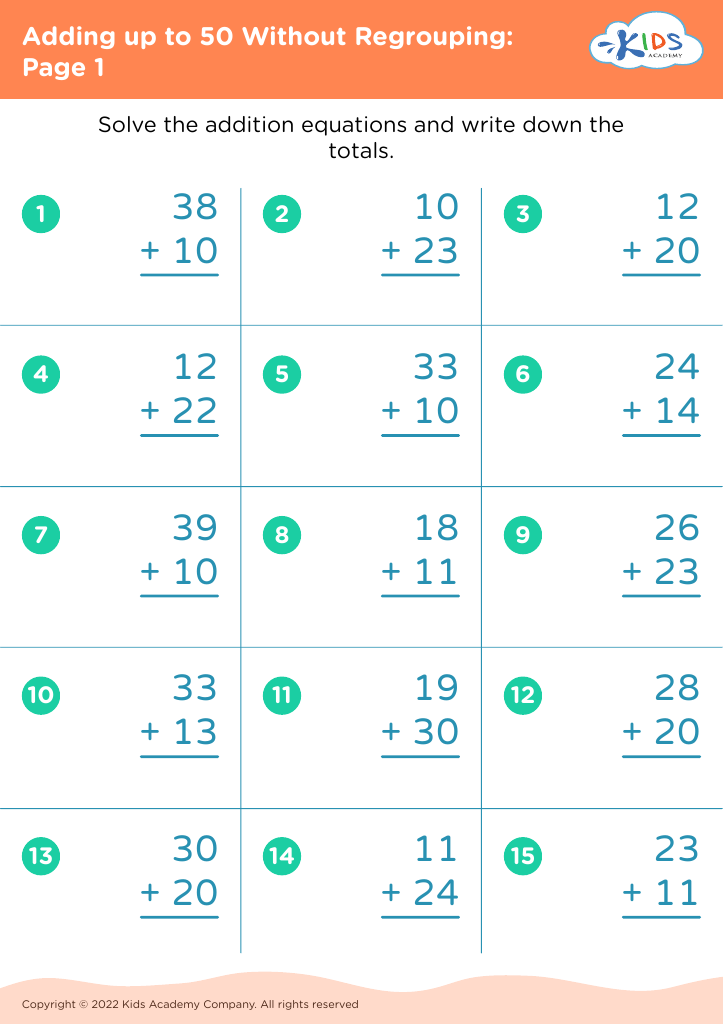Encourages logical reasoning Worksheets for Kids
1 filtered results
-
From - To
Question/Answer
What does the Encourages logical reasoning skill mean when it comes to Grade 2 Adding up to 50 Without Regrouping learning?
Encouraging logical reasoning skills in the context of Grade 2 Adding up to 50 Without Regrouping means teaching children to systematically approach and solve addition problems up to 50. It involves helping them understand and apply basic principles of addition, encouraging them to think step-by-step, and use reasoning to find solutions without needing to regroup or carry over numbers.
What are some effective activities to train students’ Encourages logical reasoning skill when teaching them about Adding up to 50 Without Regrouping?
To train students in logical reasoning while teaching adding up to 50 without regrouping, engage them in activities like number puzzles, interactive games that involve strategic addition, math scavenger hunts with sums up to 50, and use manipulatives (e.g., counting blocks) for hands-on practice. Incorporating story problems that require step-by-step reasoning can also effectively enhance their logical thinking skills.
How to test a Grade 2 student’s Encourages logical reasoning skills?
To test a Grade 2 student's logical reasoning skills, present puzzles or problem-solving activities that require making connections, classifying information, or identifying patterns. Use age-appropriate riddles, sequencing tasks, simple logic puzzles, and compare-and-contrast exercises. Observe their approach to solving these challenges, focusing on their process of reasoning and ability to explain their thought process.












